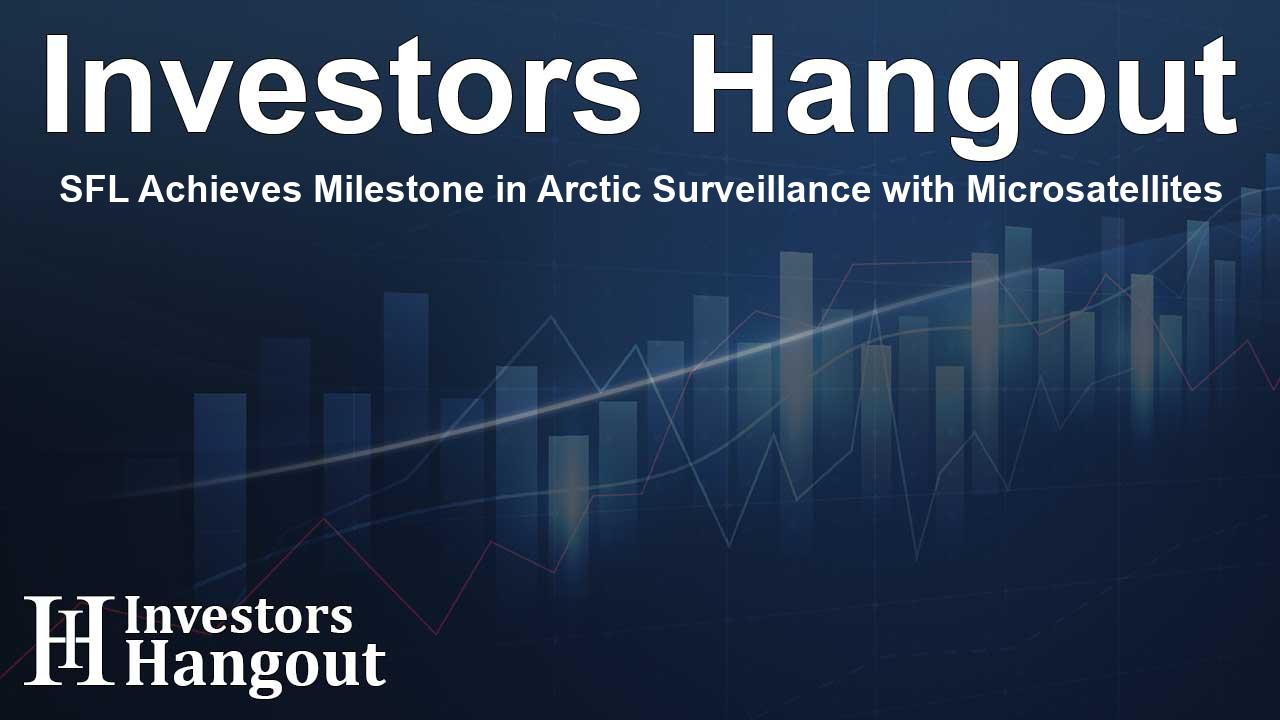SFL Achieves Milestone in Arctic Surveillance with Microsatellites

Successful Launch and Deployment of Arctic Microsatellites
Space Flight Laboratory (SFL) has announced a significant accomplishment: the launch and deployment of Canada’s Gray Jay Arctic surveillance technology demonstration mission. This innovative project was developed for Defence Research and Development Canada (DRDC), and it comprises three formation-flying microsatellites, each weighing 30 kg, which successfully launched aboard the SpaceX Transporter-12 rideshare from Vandenberg Space Force Base.
Enhancing Arctic Situational Awareness
The Gray Jay microsatellites launched alongside the NorSat-4 maritime monitoring microsatellite, which was also developed by SFL for the Norwegian Space Agency (NOSA). With this latest launch, SFL has achieved a total of 86 operationally successful microspace satellites, showcasing their commitment to advancing space technology.
Key Objectives of the Gray Jay Mission
The primary goal of the Gray Jay mission is to enhance Canada’s ability to monitor and exercise sovereignty in the Arctic region while improving situational awareness for safety and security applications. This research and demonstration mission involves a cluster of microsatellites flying in close formation equipped with different sensors designed to detect both surface and airborne objects effectively, utilizing methods such as radio frequency (RF) geolocation.
Expertise and Innovation in Satellite Technology
Dr. Robert E. Zee, SFL Director, highlighted the importance of monitoring activities in the Arctic's challenging high-latitude environment. He stated, "Monitoring activities in the harsh high-latitude environment of the Arctic with space-borne assets is crucial to safeguarding national resources and interests. SFL is proud that our affordable microspace technology has made this ambitious demonstration mission a reality on a small budget."
Why SFL Was Chosen for This Mission
The decision by DRDC to select SFL for the Gray Jay mission stemmed from SFL’s proven track record in precise attitude control and formation flying. Achieving reliable and consistent performance with smaller spacecraft is challenging; however, SFL was among the first developers to succeed in this area affordably. For the Gray Jay mission, precise attitude control is vital for operating the imaging payload, and accurate orbit determination is essential for effective RF geolocation.
Legacy of Success and Development
Over the past 26 years, various organizations have trusted SFL’s expertise in attitude control and formation flying. These technologies have enabled many operational mission goals that would otherwise be cost-prohibitive with traditional satellite models. Through innovation, SFL has successfully contributed to a wide range of applications in Earth observation, communications, and environmental monitoring, as well as in RF signal mapping.
SFL's Commitment to Future Missions
Founded in 1998, SFL has developed 86 operational satellites that have accumulated over 360 years in orbit. The laboratory is currently working on an additional 21 missions, continuing to offer a comprehensive suite of nano-, micro-, and small satellites—including high-performance, low-cost CubeSats—to meet diverse mission requirements ranging from 3 to 500 kilograms. Their dedication to pushing the envelope of satellite performance while maintaining affordability has enabled them to make significant strides in the aerospace industry.
Advancements Driving the NewSpace Movement
SFL generates bigger returns on investment through smaller, cost-effective satellites, consistently pushing the boundaries of performance while disrupting traditional cost structures in satellite deployment. Their satellites—crafted with advanced power systems, stringent attitude control, and enhanced data capacity—are designed to deliver stellar performance relative to their budget. Furthermore, SFL organizes global launches and operates a mission control center that connects with ground stations around the world, positioning itself as a key player in enabling future satellite constellations.
Frequently Asked Questions
What is the Gray Jay mission?
The Gray Jay mission is a satellite surveillance technology demonstration aimed at improving Arctic situational awareness and sovereignty for Canada.
How many microsatellites are involved in the Gray Jay mission?
The mission involves three microsatellites, each weighing 30 kg, flying in formation to conduct surveillance.
Who developed the Gray Jay microsatellites?
The microsatellites were developed by Space Flight Laboratory (SFL) for the Defence Research and Development Canada (DRDC).
What makes SFL a leader in satellite technology?
SFL is recognized for its expertise in precise attitude control and formation flying, which are critical for the successful operation of small satellites.
How long has SFL been developing satellites?
SFL has been active since 1998 and has developed 86 operational satellites that have collectively spent over 360 years in orbit.
About Investors Hangout
Investors Hangout is a leading online stock forum for financial discussion and learning, offering a wide range of free tools and resources. It draws in traders of all levels, who exchange market knowledge, investigate trading tactics, and keep an eye on industry developments in real time. Featuring financial articles, stock message boards, quotes, charts, company profiles, and live news updates. Through cooperative learning and a wealth of informational resources, it helps users from novices creating their first portfolios to experts honing their techniques. Join Investors Hangout today: https://investorshangout.com/
Disclaimer: The content of this article is solely for general informational purposes only; it does not represent legal, financial, or investment advice. Investors Hangout does not offer financial advice; the author is not a licensed financial advisor. Consult a qualified advisor before making any financial or investment decisions based on this article. The author's interpretation of publicly available data presented here; as a result, they should not be taken as advice to purchase, sell, or hold any securities mentioned or any other investments. If any of the material offered here is inaccurate, please contact us for corrections.